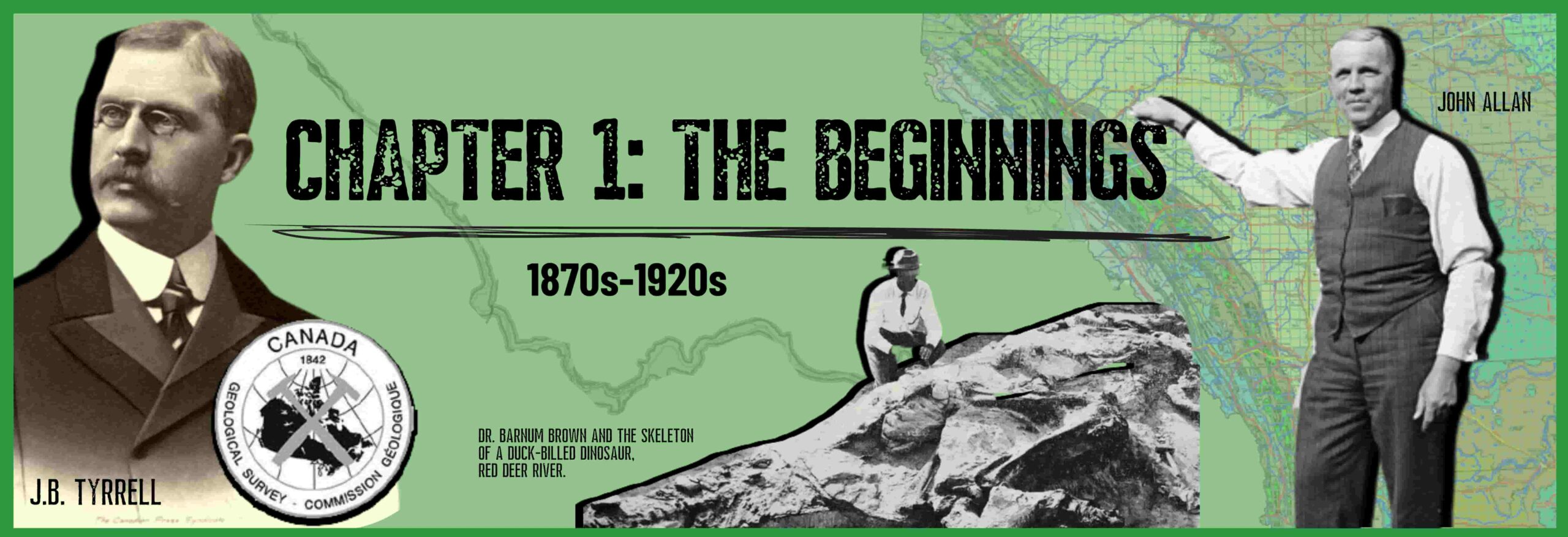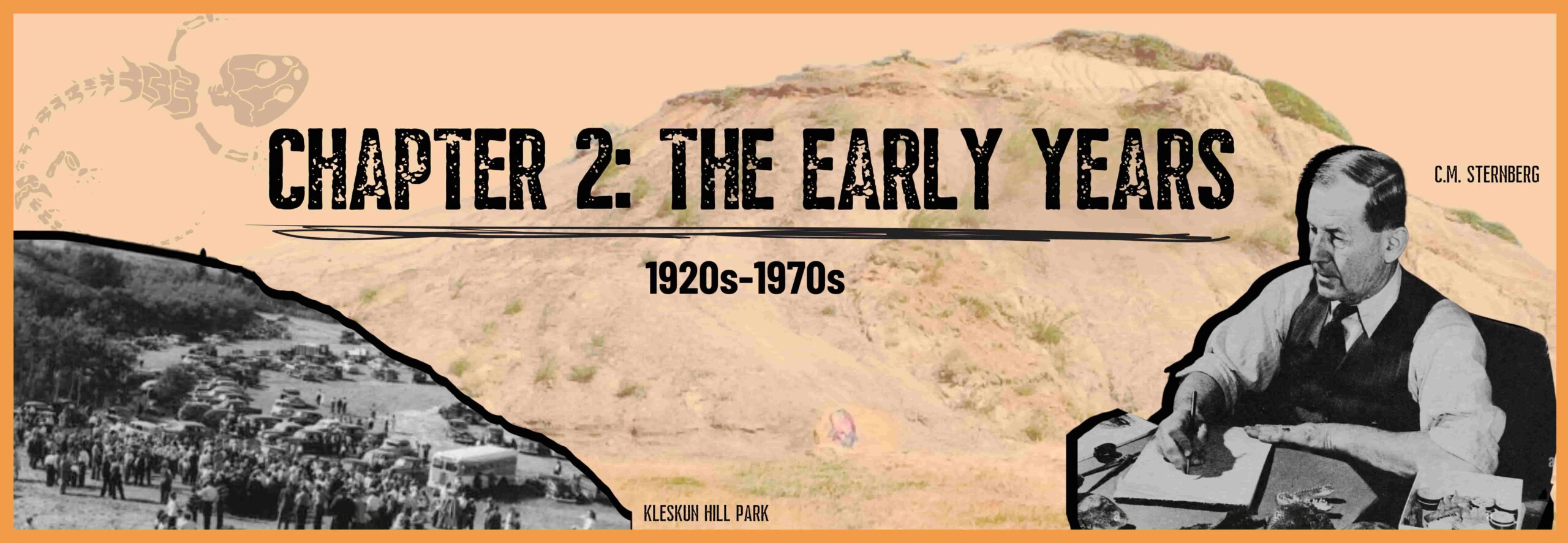


During this period, palaeontological research in Alberta’s Peace Region was still very new. While reports of mineral deposits and fossil finds had been made by settlers, hunters, and Indigenous peoples, these discoveries had not yet drawn widespread attention. In 1905, Alberta and Saskatchewan were formally designated as provinces. With these new political designations, the national government commissioned surveys of these regions to explore their potential for natural resources, such as coal. These surveys brought geologists and later palaeontologists to the province.
Pioneering Geologists: Laying The Groundwork
Some of the first informal palaeontological investigations in the region were conducted in the late 1800s by pioneering geologists. These included Joseph Burr Tyrrell, namesake of the Royal Tyrrell Museum of Palaeontology, who worked for the Geological Survey of Canada (GSC). They were among the first to play a key role in the understanding of Alberta’s geological history, the evolution of life, and past environmental conditions. The development of the oil and gas industry in the early 20th century also indirectly fuelled the growth of palaeontological discovery.
Great Canadian Dinosaur Rush: The First Fossil Finds
In 1922, F. H. McLearn, a railway engineer and amateur fossil hunter, discovered fossil bone fragments along the Red Deer River. It was one of the first documented dinosaur fossil finds in Alberta. McLearn’s discovery would help trigger the ‘Great Canadian Dinosaur Rush’ in the early 1900s, when museums and other institutions paid fossil hunters to feverously collect dinosaur fossils from the Canadian badlands to put on exhibit. Charles H. Sternberg and his three sons, a famous American fossil hunting family, collected thousands of dinosaur specimens from western Canada while employed by the Canadian Geological Survey (now the Canadian Museum of Nature).
Mapping Alberta: A New Perspective
In 1925, geologist John Allan produced the first geological map of the province. This map was also a crucial milestone, as it charted the fossil-bearing formations of the region.
While the early work of the late 1800s and early 1900s was important and foundational, the focus tended to be in the badlands of southern Alberta. It wasn’t until the mid-to-late 1920s that more comprehensive palaeontological research in the Peace River area took place.

In the early 20th century, coal mining was a significant industry in northern Alberta, particularly in the Peace Region. While fossils were found during the mining expeditions, the professional palaeontology community, still in its infancy in Canada, were focused on southern Alberta. As more discoveries were made, growing curiosity about northern Alberta would soon lead to the first formal palaeontological expeditions. Avocational palaeontologists (people interested in palaeontology but not professionals) were critical at this period of the Peace Region’s palaeontological story.
Avocational Palaeontologists: The Key Players
- Robert Cochrane: a geologist who facilitated fossil collection and geological research in the region. His local knowledge was crucial in helping guide fossil-hunting efforts.
- George Robinson: a pioneer from the nearby town of Sexsmith, who advocated for the region’s geological and palaeontological potential.
- Dr. Luis O'Brien: a physician with a deep passion for natural history, became one of the primary organizers of the Geological Picnics and field trips.
Geological Picnics: Kleskun Hill Park
By the late 1940s, local residents and amateur naturalists in the Peace Region began organizing informal ‘Geological Picnics’ in areas like Kleskun Hill Park. These gatherings, which continued each summer until the early 1950s and annually attracted up to 2000 people, provided a chance for people to explore the landscape, collect fossils, and share their knowledge.
The C.M. Sternberg Visit: Fossil Lizard Find
In 1951, the Geological Picnics were visited by C.M. Sternberg, the middle son of a famous American fossil hunting family that had collected dinosaurs in southern Alberta for the Canadian Museum of Nature (then called the Canadian Geological Survey). Sternberg’s visit marked a turning point, as he identified and described what is believed to be the first vertebrate fossil from the region: a fossil lizard. Sternberg also commended Robert Cochrane for his efforts in facilitating fossil and geological research in the area.
In the years that followed, the Peace Region began to attract more serious attention from palaeontologists and fossil enthusiasts alike. Major discoveries would soon be made, including one that would change the course of palaeontology in the region forever.

↓

↓

↓

↓

↓

↓

↓
